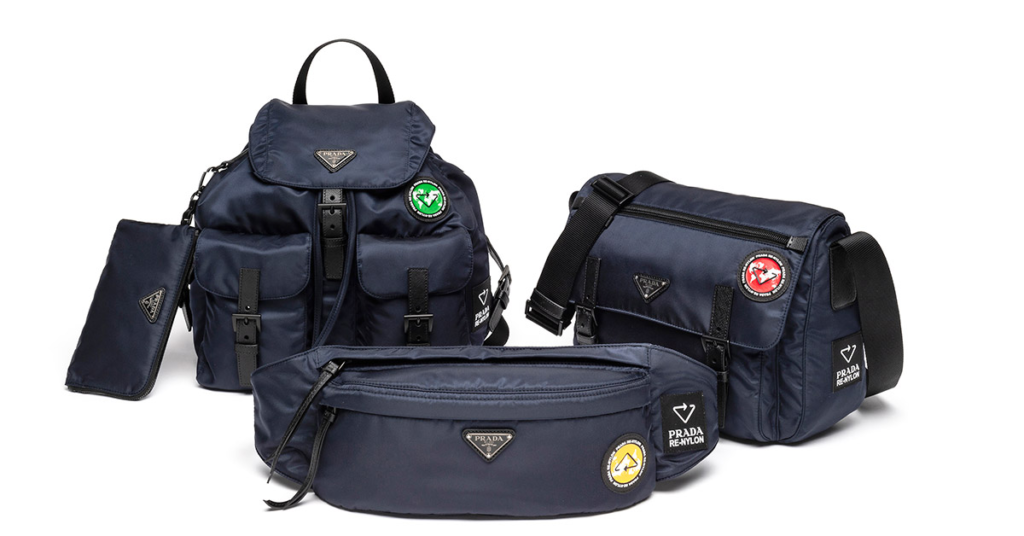In a remarkable move aligning luxury with responsibility, Prada has launched a groundbreaking recycling platform — a step Vogue Business recently spotlighted as a key turning point in fashion sustainability. The new initiative signals Prada’s commitment to closing the loop on fashion waste, responding to global e
nvironmental concerns, and reshaping how the industry thinks about textile reuse.
As environmental pressures mount, especially on major fashion houses, Prada is setting an example by introducing a full-circle solution that focuses not just on making luxury, but on re-making it. This launch isn’t just another PR-friendly announcement — it’s a strategic, action-backed platform with global implications. You can explore Vogue Business’ detailed coverage of this launch here.
What Is Prada’s Recycling Platform All About?
Prada’s recycling platform centers around collecting used materials, particularly nylon and cotton from its older product lines, and regenerating them into new, premium-quality goods.

The initiative builds upon its earlier sustainable materials program called Re-Nylon, introduced in 2019, which aimed to replace all virgin nylon with regenerated nylon by the end of 2021. Now, Prada is going one step further — creating an accessible infrastructure that allows consumers to return their old Prada items for recycling. These items are processed in specialized facilities to recover fibers, which are then woven into new collections.
The platform, expected to roll out in stages across Europe, the U.S., and Asia by the end of 2025, will initially focus on high-demand categories like bags, shoes, and jackets.
Vogue Business: Why This Launch Matters
Vogue Business has praised the platform’s holistic approach, noting that this is not simply about upcycling materials. It’s about changing behavior across the value chain — from supply to production to consumption. The platform doesn’t just serve Prada’s sustainability goals; it encourages customers to participate in the brand’s circular economy model.
This initiative, as detailed by Vogue Business, also places Prada ahead of many other luxury players who are still hesitating to fully commit to recyclability. The coverage highlights how Prada is balancing its premium identity while tackling the very real issues of material waste and ecological responsibility.
Eco-Fashion Isn’t a Trend — It’s a Transformation
In the past few years, the fashion world has been waking up to the environmental impact of fast fashion and overproduction. According to the Ellen MacArthur Foundation, the equivalent of one garbage truck of textiles is landfilled or burned every second.
Luxury brands have often been slow to adapt due to concerns around product quality, legacy branding, and pricing. However, Prada’s recycling platform is proof that innovation doesn’t have to compromise heritage.
Instead, the brand is showing how sustainability and style can coexist — and even complement each other. Vogue Business noted that Prada’s use of Econyl, a nylon made entirely from waste like fishing nets and fabric scraps, is a strong example of material innovation that doesn’t sacrifice product integrity.
How Will Consumers Use This Platform?
The recycling platform will include physical collection points at selected Prada boutiques, as well as a digital return service for remote recycling. Customers can return eligible Prada products they no longer use in exchange for store credit or exclusive access to limited-edition sustainable lines.

This return-and-reward model is designed to increase user engagement, reduce waste, and strengthen brand loyalty. Each item returned will be sorted based on material composition, age, and reusability, then sent for fiber extraction and re-manufacturing.
In a recent Vogue Business article, Prada’s Head of Corporate Social Responsibility emphasized, “We want our clients to know that the Prada product they bought 10 years ago can now be part of our future collections.”
How the Fashion Industry Is Reacting
Industry watchers are responding positively. Experts believe that Prada’s initiative may pressure other fashion giants to introduce or accelerate similar programs.
Luxury competitors like Burberry, LVMH, and Gucci have launched partial sustainability measures, but none have yet offered a consumer-facing recycling infrastructure on this scale. Vogue Business notes that while resale platforms like The RealReal and Vestiaire Collective offer second-life options, Prada’s move is unique because it retains full control over the recycling and repurposing process.
This means Prada not only reduces its environmental footprint but also maintains product authenticity — a critical factor in luxury branding.
Challenges Ahead for Prada
Despite the positive response, the platform is not without its hurdles. Logistics for textile recycling are complex, especially for blended materials like cotton-polyester. Additionally, scaling this model globally will require Prada to collaborate with a wide network of recyclers, textile engineers, and sustainability regulators.
Another potential challenge is consumer adoption. While luxury buyers are increasingly environmentally conscious, engaging them in return-based behavior — especially for items once considered lifetime purchases — will require thoughtful messaging and incentives.
Still, Prada seems prepared. The brand is expected to launch a major marketing campaign in Q4 2025 to build awareness, share the platform’s value proposition, and encourage both old and new customers to participate.
Final Thoughts: A Turning Point in Luxury Fashion
The launch of Prada’s recycling platform, highlighted by Vogue Business, marks more than just a sustainable innovation — it’s a cultural shift for the fashion world. By embracing circular design and making customers an active part of its sustainability mission, Prada is redefining what it means to be a modern luxury brand.
This could be the moment when recycling in high fashion is no longer the exception — but the expectation.
If this trend gains further traction, we may soon witness a luxury market where elegance, heritage, and sustainability walk hand-in-hand down the global runway.
For full details and interviews, read the official coverage on Vogue Business.
Also Read – Fashion Giant Sells Luxury Manhattan Office in Stunning Deal






